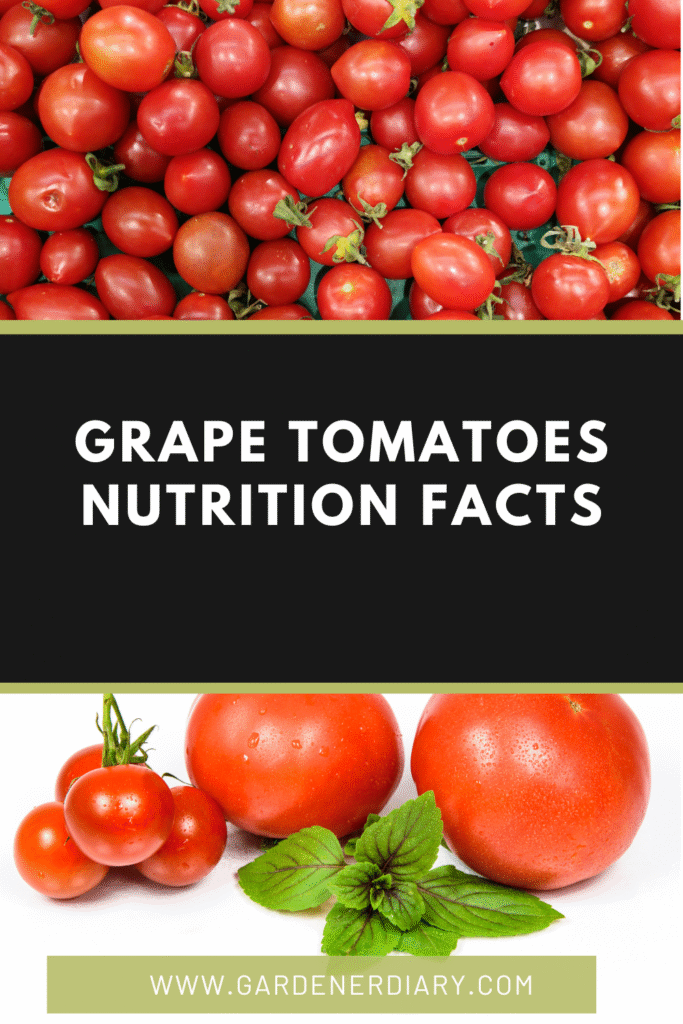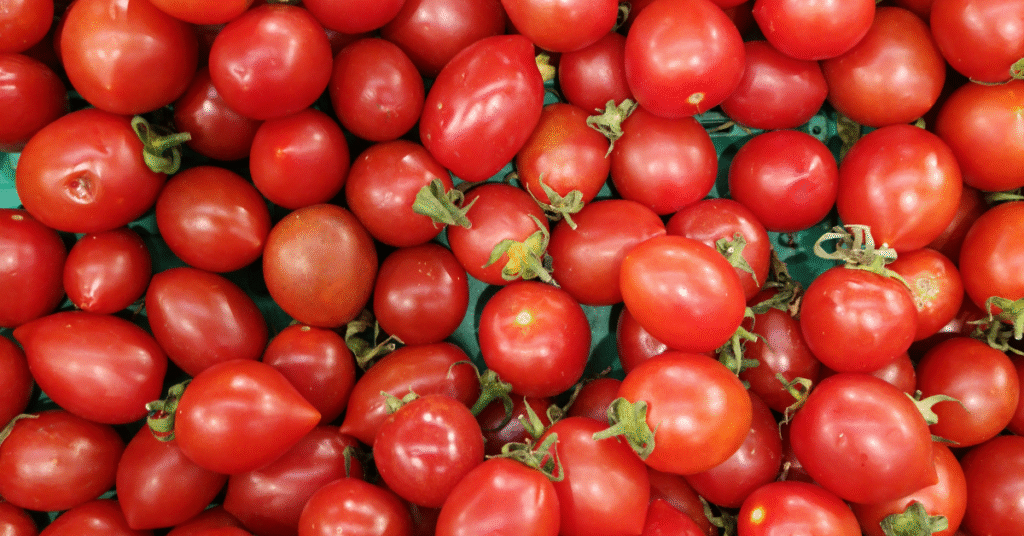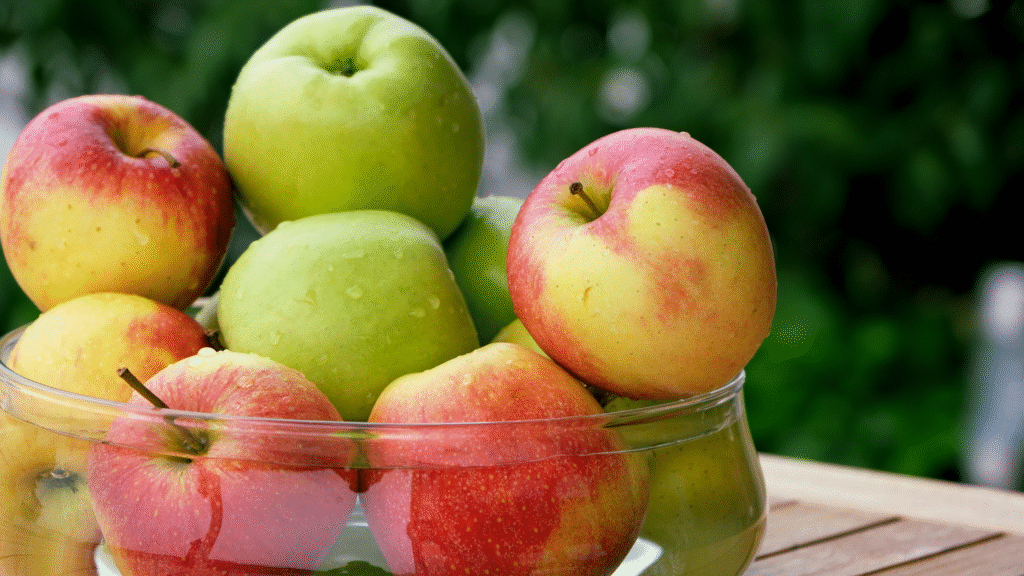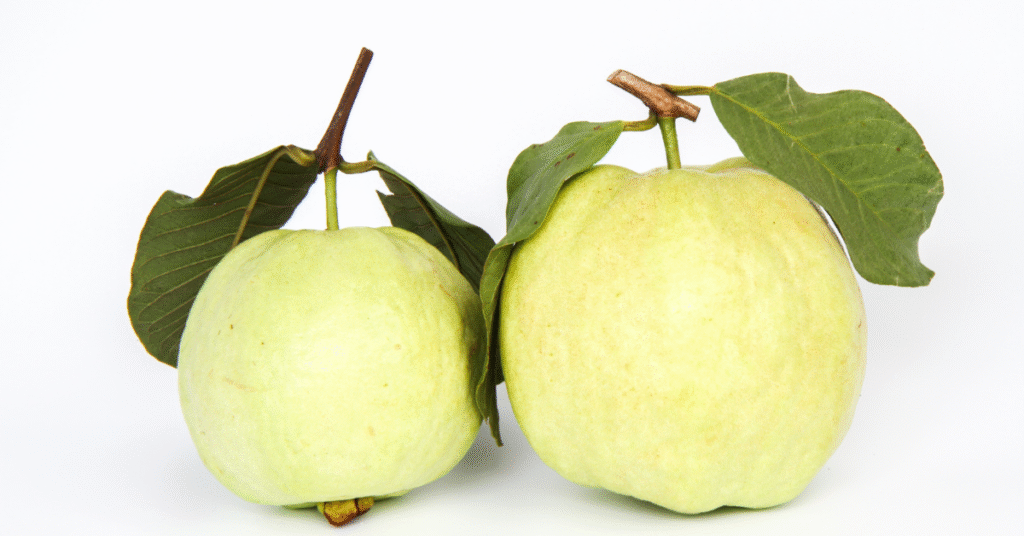Grape tomatoes pack incredible nutritional value into their small, bite-sized form. These miniature powerhouses offer essential vitamins, minerals, and antioxidants that support optimal health. Understanding grape tomatoes nutrition facts helps you make informed dietary choices and maximize the health benefits of these colorful vegetables.
What Are Grape Tomatoes?
Grape tomatoes are small, oblong-shaped tomatoes that resemble grapes in both size and shape. They typically measure 1-2 inches in length and weigh about 10-15 grams each. These cherry tomato varieties feature thick skin, sweet flavor, and firm texture that makes them perfect for snacking and cooking.
The popularity of grape tomatoes has grown significantly due to their convenience, longer shelf life, and concentrated flavor. Research shows that these tomatoes contain higher concentrations of certain nutrients compared to larger tomato varieties.
Complete Grape Tomatoes Nutrition Facts
Macronutrient Profile
One cup (149 grams) of grape tomatoes contains:
- Calories: 27
- Protein: 1.3 grams
- Carbohydrates: 5.8 grams
- Dietary Fiber: 1.8 grams
- Total Fat: 0.3 grams
- Sugar: 3.9 grams
The low calorie count makes grape tomatoes an excellent choice for weight management. The natural sugars provide quick energy, while fiber supports digestive health and helps maintain stable blood sugar levels.
Vitamin Content
Grape tomatoes deliver impressive amounts of essential vitamins:
Vitamin C: 20.4 mg (23% Daily Value) Vitamin C acts as a powerful antioxidant and supports immune system function. One cup of grape tomatoes provides nearly a quarter of your daily vitamin C needs.
Vitamin K: 11.8 mcg (10% Daily Value) This vitamin plays a crucial role in blood clotting and bone health maintenance.
Vitamin A: 1499 IU (30% Daily Value) Beta-carotene converts to vitamin A in your body, supporting eye health and immune function.
Folate: 22.3 mcg (6% Daily Value) Folate supports cell division and DNA synthesis, making it especially important for pregnant women.
Vitamin B6: 0.1 mg (5% Daily Value) This B vitamin helps metabolize proteins and supports brain function.
Mineral Content
Essential minerals found in grape tomatoes include:
Potassium: 353 mg (10% Daily Value) Potassium regulates blood pressure and supports heart health.
Manganese: 0.2 mg (8% Daily Value) Manganese supports bone development and wound healing.
Magnesium: 16.1 mg (4% Daily Value) Magnesium participates in over 300 enzymatic reactions in your body.
Iron: 0.4 mg (2% Daily Value) Iron carries oxygen throughout your body and prevents anemia.
Calcium: 15.0 mg (2% Daily Value) Calcium builds strong bones and teeth.
Powerful Antioxidants in Grape Tomatoes
Lycopene: The Star Antioxidant
Lycopene gives grape tomatoes their vibrant red color and provides exceptional health benefits. Studies demonstrate that lycopene may reduce cancer risk, particularly prostate cancer in men.
Grape tomatoes contain approximately 3.0-5.0 mg of lycopene per 100 grams. Cooking tomatoes increases lycopene bioavailability, making cooked grape tomatoes even more nutritious than raw ones.
Beta-Carotene
Beta-carotene converts to vitamin A in your body and acts as a potent antioxidant. This compound protects cells from oxidative damage and supports healthy vision, especially night vision.
Flavonoids
Grape tomatoes contain quercetin, kaempferol, and other flavonoids that provide anti-inflammatory benefits. These compounds may help reduce chronic disease risk and support cardiovascular health.
Health Benefits of Grape Tomatoes
Heart Health Support
The potassium in grape tomatoes helps regulate blood pressure by counteracting sodium effects. Lycopene may reduce LDL (bad) cholesterol oxidation, which contributes to heart disease development.
Regular consumption of tomatoes associates with reduced cardiovascular disease risk. Research indicates that tomato-rich diets support overall heart health through multiple mechanisms.
Cancer Prevention Properties
Lycopene shows promise in cancer prevention, particularly for prostate, lung, and stomach cancers. The antioxidant properties help neutralize free radicals that can damage DNA and trigger cancer development.
Vitamin C also supports cancer prevention by strengthening immune system function and protecting cells from oxidative stress.
Eye Health Benefits
Vitamin A and beta-carotene support retinal health and may reduce age-related macular degeneration risk. The antioxidants in grape tomatoes protect eye tissues from light-induced damage.
Skin Health Enhancement
Vitamin C promotes collagen production, which maintains skin elasticity and reduces wrinkle formation. Lycopene may provide natural protection against UV damage when consumed regularly.
Bone Health Support
Vitamin K works with calcium to maintain bone density and strength. The combination of minerals in grape tomatoes supports overall skeletal health.
Grape Tomatoes vs Other Tomato Varieties
Nutritional Comparison
Grape tomatoes generally contain higher concentrations of nutrients compared to larger tomato varieties. The smaller size means less water content and more concentrated vitamins and minerals per serving.
Cherry tomatoes and grape tomatoes share similar nutritional profiles, but grape tomatoes typically have slightly higher lycopene content due to their deeper red color.
Shelf Life and Storage
Grape tomatoes maintain nutritional value longer than larger tomatoes due to their thicker skin. Proper storage preserves both nutrition and flavor. Store them in appropriate vegetable storage containers to maximize freshness and nutrient retention.
How to Maximize Nutritional Benefits
Cooking Methods
Cooking grape tomatoes increases lycopene bioavailability by breaking down cell walls. Light cooking methods like roasting or sautéing preserve most vitamins while enhancing antioxidant absorption.
Raw grape tomatoes provide maximum vitamin C content, as heat can reduce this water-soluble vitamin. Balance raw and cooked preparations to get the full spectrum of nutritional benefits.
Pairing with Healthy Fats
Consuming grape tomatoes with healthy fats like olive oil, avocado, or nuts improves fat-soluble vitamin absorption. This combination enhances lycopene and beta-carotene uptake.
Optimal Serving Sizes
One cup of grape tomatoes provides significant nutritional benefits without excessive calories. This serving size fits well into most dietary patterns and provides substantial vitamin and mineral contributions.
Dietary Considerations and Special Populations
Low-Carb and Keto Diets
Grape tomatoes fit well into low-carb eating plans due to their minimal carbohydrate content. They work excellently in keto-friendly recipes as flavor enhancers and nutrient sources.
One cup contains only 5.8 grams of carbohydrates, making them suitable for most low-carb dietary approaches.
Weight Management
The high water content and fiber in grape tomatoes promote satiety while providing minimal calories. They make excellent snacks for people trying to maintain or lose weight.
Diabetes Management
The fiber content helps slow sugar absorption, making grape tomatoes suitable for people managing blood sugar levels. The natural sugars provide quick energy without causing dramatic blood sugar spikes.
Pregnancy and Nursing
The folate content supports healthy fetal development, making grape tomatoes beneficial for pregnant women. The vitamin C content also supports immune function during pregnancy and lactation.
Growing and Quality Factors
Cultivation Systems Impact
Research on grape tomatoes in different cultivation systems shows that growing conditions significantly affect nutritional content. Organic farming methods often produce tomatoes with higher antioxidant levels.
Greenhouse-grown grape tomatoes may have different nutritional profiles compared to field-grown varieties, but both provide substantial health benefits.
Ripeness and Nutrition
Fully ripe grape tomatoes contain maximum lycopene levels. The deep red color indicates optimal antioxidant content. Choose tomatoes with vibrant color and firm texture for best nutritional value.
Creative Ways to Include Grape Tomatoes in Your Diet
Breakfast Options
Add halved grape tomatoes to omelets, scrambled eggs, or breakfast bowls. They pair well with easy bread recipes for nutritious breakfast combinations.
Lunch and Dinner Ideas
Grape tomatoes work well in salads, pasta dishes, grain bowls, and roasted vegetable medleys. Their sweet flavor complements both savory and Mediterranean-style dishes.
Snack Preparations
Fresh grape tomatoes make excellent standalone snacks or additions to vegetable platters. Their natural sweetness satisfies cravings while providing essential nutrients.
Meal Prep Applications
Grape tomatoes maintain their texture well in meal prep containers. They add color, flavor, and nutrition to prepared meals throughout the week. Store them properly using suitable containers for overnight oats and other meal prep needs.
Potential Considerations
Allergies and Sensitivities
Some people experience tomato allergies or sensitivities. Symptoms may include digestive upset, skin reactions, or respiratory issues. Consult healthcare providers if you suspect tomato sensitivity.
Acid Content
Grape tomatoes contain natural acids that may aggravate acid reflux in sensitive individuals. People with GERD should monitor their tolerance and consume tomatoes in moderation if needed.
Pesticide Residues
Choose organic grape tomatoes when possible to minimize pesticide exposure. Wash all tomatoes thoroughly before consumption, regardless of growing method.
Storage and Food Safety
Proper Storage Techniques
Store ripe grape tomatoes at room temperature for best flavor. Refrigerate only if you need to extend shelf life, but allow them to return to room temperature before eating for optimal taste.
Unripe grape tomatoes can ripen at room temperature when stored with other fruits that produce ethylene gas, such as bananas or apples.
Food Safety Guidelines
Wash grape tomatoes thoroughly under running water before consumption. Remove any damaged or overripe tomatoes from storage containers to prevent spoilage spread.
Environmental and Sustainability Factors
Water Content and Efficiency
Grape tomatoes require less water per serving compared to larger tomato varieties due to their concentrated nutrition. This makes them a more environmentally efficient choice.
Packaging and Transport
The durability of grape tomatoes reduces food waste during transport and storage. Their longer shelf life means fewer tomatoes spoil before consumption.
Scientific Research and Future Developments
Ongoing Studies
Current research continues to explore the health benefits of tomato consumption, including grape tomatoes. Scientists study optimal growing conditions, processing methods, and consumption patterns for maximum health benefits.
Breeding Programs
Agricultural researchers work to develop grape tomato varieties with enhanced nutritional profiles. These efforts focus on increasing antioxidant content while maintaining flavor and storage characteristics.
Conclusion
Grape tomatoes offer exceptional nutritional value in a convenient, flavorful package. Their impressive vitamin, mineral, and antioxidant content supports multiple aspects of health, from heart function to immune system support.
The low calorie count combined with high nutrient density makes grape tomatoes an excellent addition to any healthy eating plan. Whether eaten raw as snacks or incorporated into cooked dishes, these small tomatoes deliver significant health benefits.
Regular consumption of grape tomatoes, as part of a balanced diet, may contribute to reduced chronic disease risk and improved overall health. Their versatility, storage stability, and concentrated nutrition make them a smart choice for health-conscious consumers.
Consider adding grape tomatoes to your regular grocery list and experiment with different preparation methods to maximize both their nutritional benefits and culinary potential. Your body will appreciate the concentrated nutrition these small but powerful vegetables provide.



